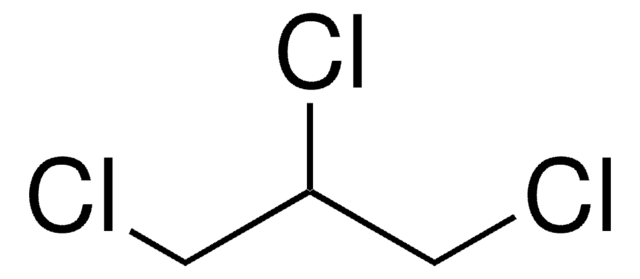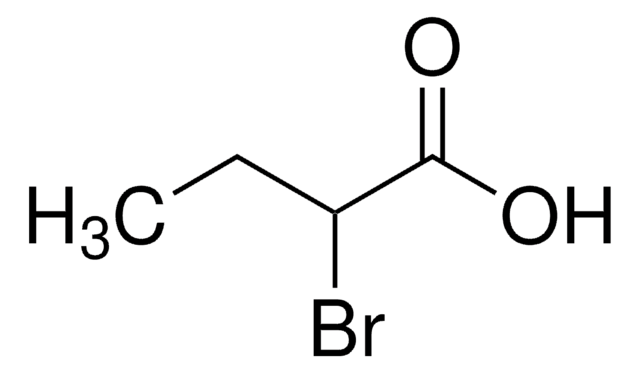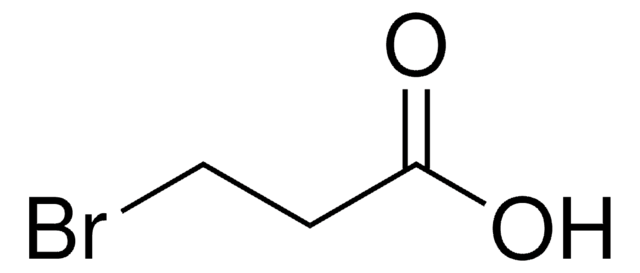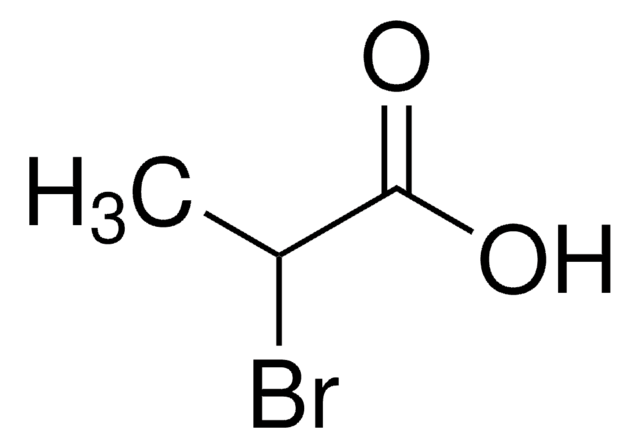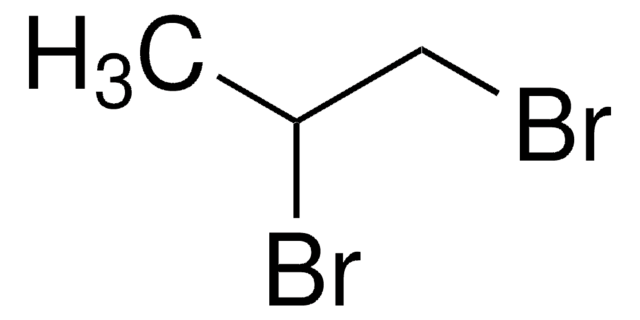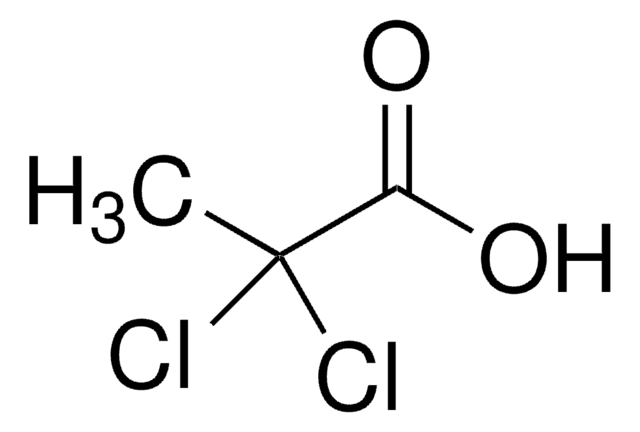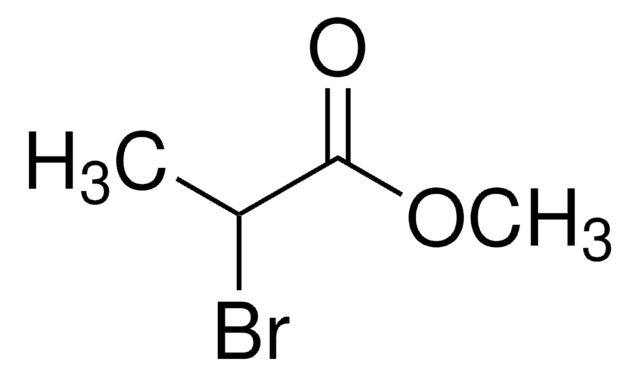139947
2,3-Dibromopropionic acid
98%
Iniciar sesiónpara Ver la Fijación de precios por contrato y de la organización
About This Item
Fórmula lineal:
CH2BrCHBrCOOH
Número de CAS:
Peso molecular:
231.87
Beilstein/REAXYS Number:
1721428
EC Number:
MDL number:
UNSPSC Code:
12352100
PubChem Substance ID:
NACRES:
NA.22
Productos recomendados
Quality Level
assay
98%
form
solid
bp
160 °C/20 mmHg (lit.)
mp
64-66 °C (lit.)
functional group
bromo
carboxylic acid
SMILES string
OC(=O)C(Br)CBr
InChI
1S/C3H4Br2O2/c4-1-2(5)3(6)7/h2H,1H2,(H,6,7)
InChI key
ZMYAKSMZTVWUJB-UHFFFAOYSA-N
¿Está buscando productos similares? Visita Guía de comparación de productos
Categorías relacionadas
Application
2,3-Dibromopropionic acid was used in chemical shift imaging during analysis of multiple samples by multiplex sample NMR methodology. It was used as surrogate standard during extraction and determination of haloacetic acid in drinking water.
signalword
Danger
hcodes
Hazard Classifications
Skin Corr. 1B
Storage Class
8A - Combustible corrosive hazardous materials
wgk_germany
WGK 3
flash_point_f
Not applicable
flash_point_c
Not applicable
ppe
Eyeshields, Faceshields, Gloves, type P3 (EN 143) respirator cartridges
Elija entre una de las versiones más recientes:
¿Ya tiene este producto?
Encuentre la documentación para los productos que ha comprado recientemente en la Biblioteca de documentos.
Carles Planas et al.
Analytical and bioanalytical chemistry, 411(17), 3905-3917 (2019-06-04)
A fast, simple, selective, and sensitive method for the analysis of 11 haloacetic acids (HAAs) in chlorine-treated water has been developed. The method is based on liquid chromatography-electrospray ionization-triple quadrupole tandem mass spectrometry (LC/ESI-QqQ-MS/MS) with direct injection of the aqueous
Occurrence and Determination of Haloacetic Acids in Metro Manila Drinking Water.
Rodriguez IB and Espino MPB.
Science Diliman, 21(2), 35-41 (2010)
T Hou et al.
Analytical chemistry, 73(11), 2541-2546 (2001-06-14)
Two improved approaches for the rapid analysis of multiple samples using multiplex sample NMR are described. In the first approach, frequency-selective 90 degrees radio frequency pulses and large pulsed field gradients are applied to excite and detect multiple samples in
Tarek Manasfi et al.
International journal of hygiene and environmental health, 220(3), 583-590 (2017-02-16)
An undesirable consequence of disinfection is the formation of chemical contaminants known as disinfection byproducts (DBPs). Chronic exposure to DBPs has been linked to adverse health effects. The occurrence of DBPs in chlorinated pools filled with seawater (such as thalassotherapy
Tarek Manasfi et al.
International journal of hygiene and environmental health, 222(1), 1-8 (2018-07-23)
Chlorination of seawater is one of the most effective technologies for industrial biofouling control. However, chlorination leads to the formation of halogenated chlorination byproducts (CBPs) associated with potential risks to environmental and human health. The present study investigated the occurrence
Nuestro equipo de científicos tiene experiencia en todas las áreas de investigación: Ciencias de la vida, Ciencia de los materiales, Síntesis química, Cromatografía, Analítica y muchas otras.
Póngase en contacto con el Servicio técnico